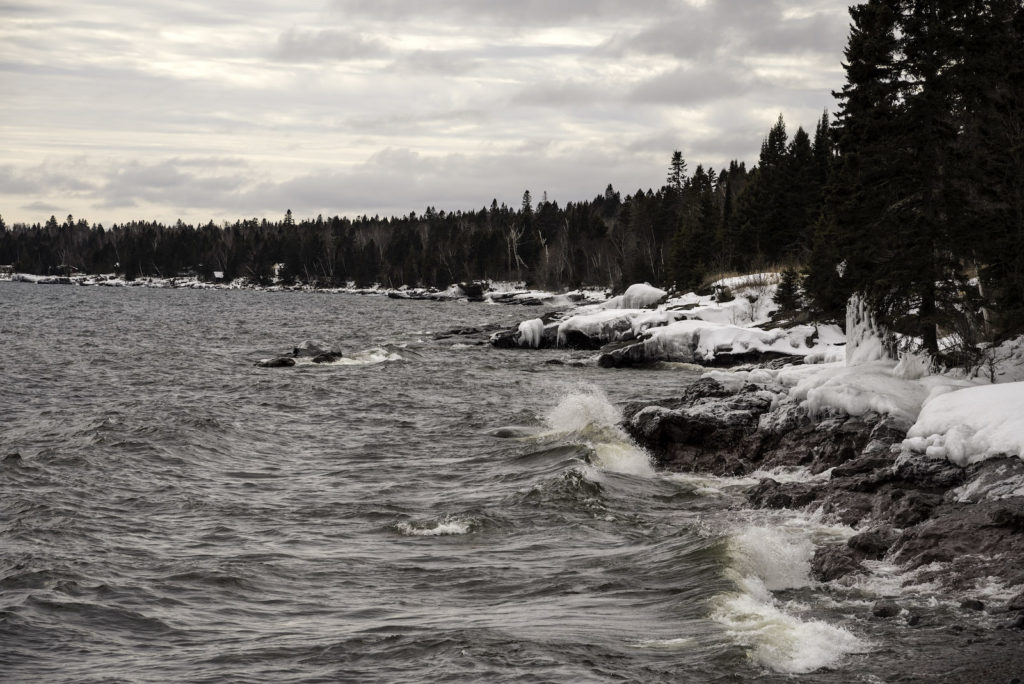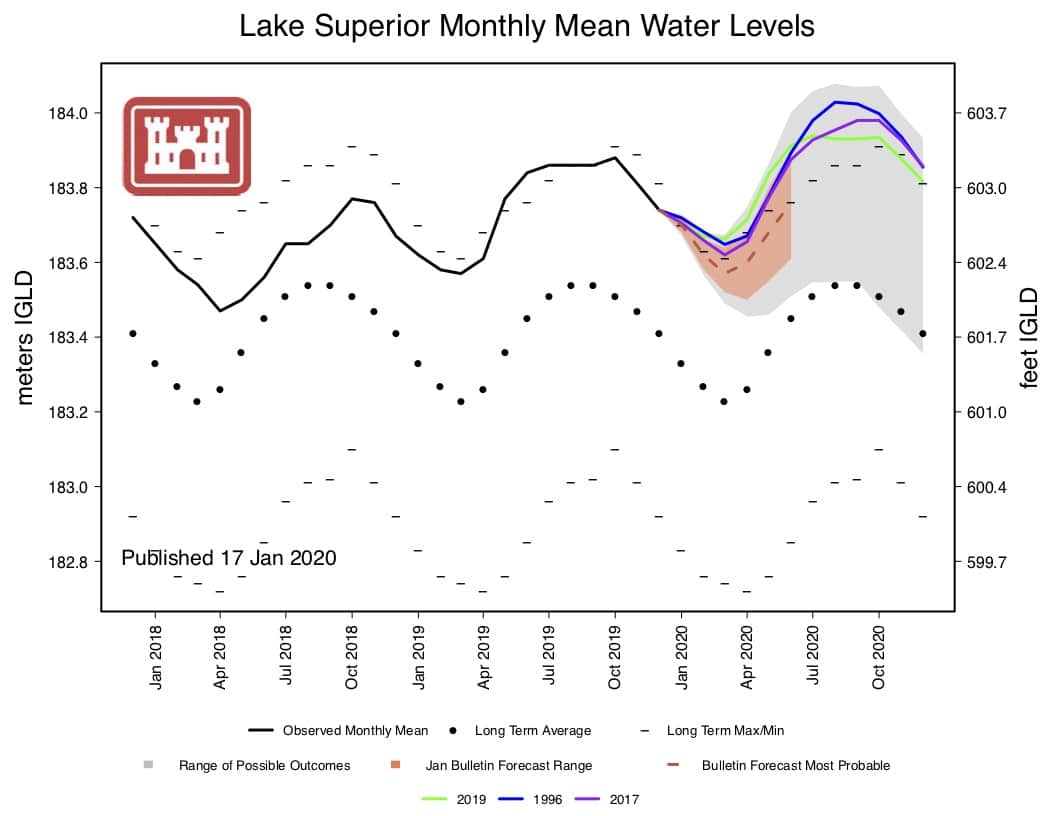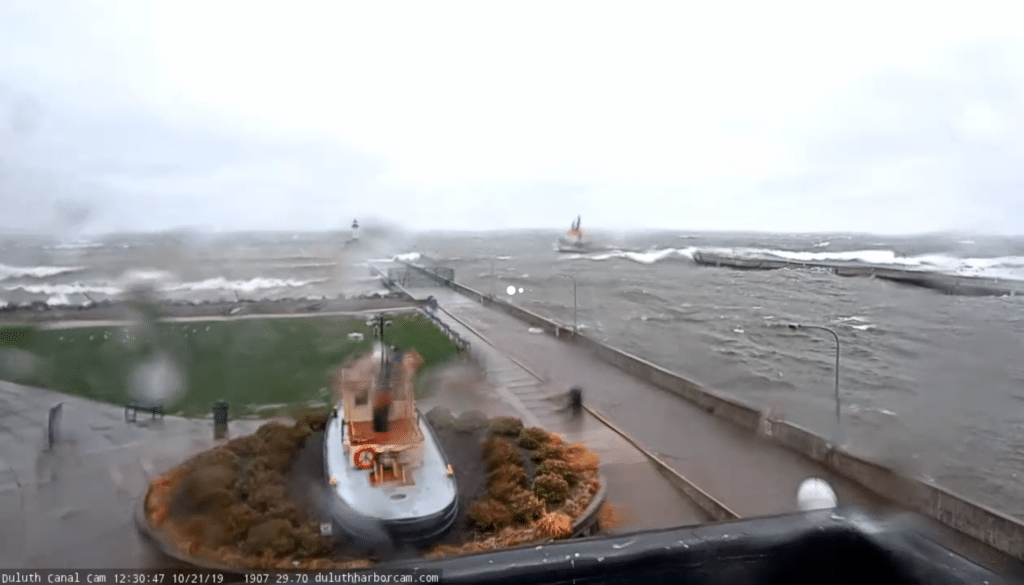
Federal officials are expecting last year’s high water levels on Lake Superior and the other Great Lakes to persist in the months ahead. The lakes are starting the year higher than they were at the same time in 2019, and the U.S. Army Corps of Engineers says it’s possible the level will exceed records set last summer.
Earlier this month, the lake was 13 inches above its 100-year-average, and 4 inches above its level of a year ago. In December, a month when water levels typically drop, the lake saw only half its normal decline.
“Several natural factors contribute to the record lake levels,” the Army Corps of Engineers reports. “Persistent wet conditions across the Great Lakes basin continue to drive high water levels. Many cities across the basin set records in 2019 for the wettest period on record. The warmer than average temperatures in December led to greater runoff due to snow pack melting, especially on lakes Superior, Michigan and Huron, leading to more water supply. The warm air also caused less evaporation off the lakes’ surface, which leads to more water in the system.”
Lake Superior set or tied high-water records in June, July, and August of last year. High water has caused significant problems for people and communities along the lake. Strong storms have sent large waves crashing into the shoreline at elevated heights, causing erosion and flooding.

Lake managers have recently begun allowing a little more water to flow out of Lake Superior at its outlet into the St. Mary’s River. Discharge levels are managed by the International Joint Commission, with input from both American and Canadian citizens. But with the downstream lakes, including Michigan and Huron, also expected to have high water this year, communities on their shores are resisting any additional measures to lower Lake Superior’s water.
The agencies in charge stress there is actually little they can do to control the lake water levels. With its huge volume and surface area, natural forces outweigh most human manipulation. Management is dictated by the International Lake Superior Board of Control, under the authority of the International Joint Commission.
“Although the Board as the ability to control Lake Superior’s outflow, full control of lake levels is not possible,” the Army Corps says. “This is because the major factors that affect the supply of water to the Great Lakes (overlake precipitation, runoff, and evaporation) cannot be controlled, nor can they be accurately predicted over the long term.”
Water has remained high primarily because of precipitation patterns which have remained wet late into the season. This has not allowed the lakes to go down as they typically do in fall.
The Duluth area received almost four inches more rain than normal in 2019, and almost 40 inches more snow than average.
The U.S. Army Corps of Engineers has launched a new website dedicated to the high water issue, with information and resources for affected property-owners and communities.


